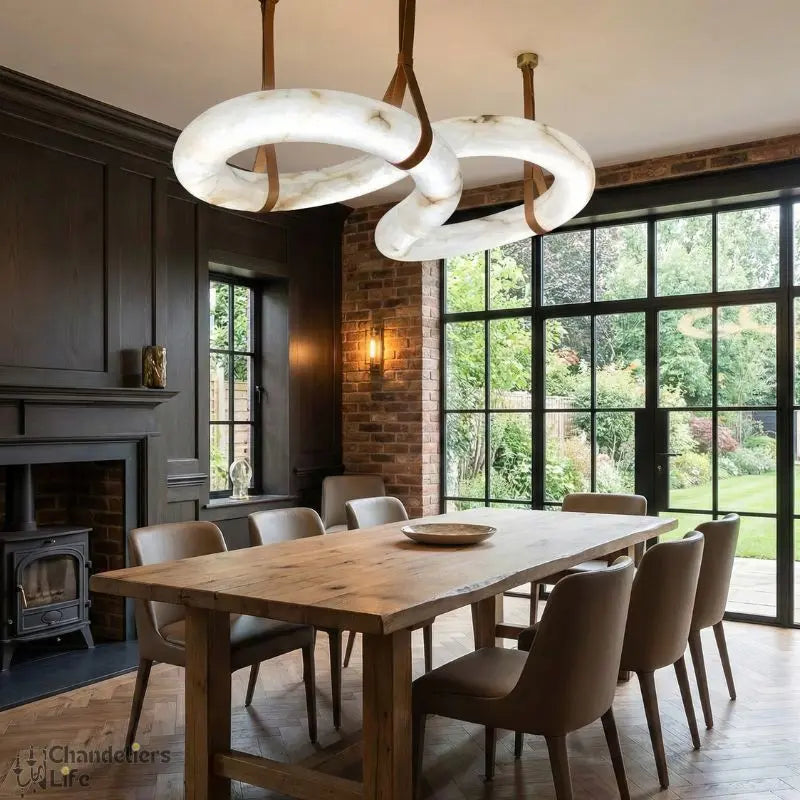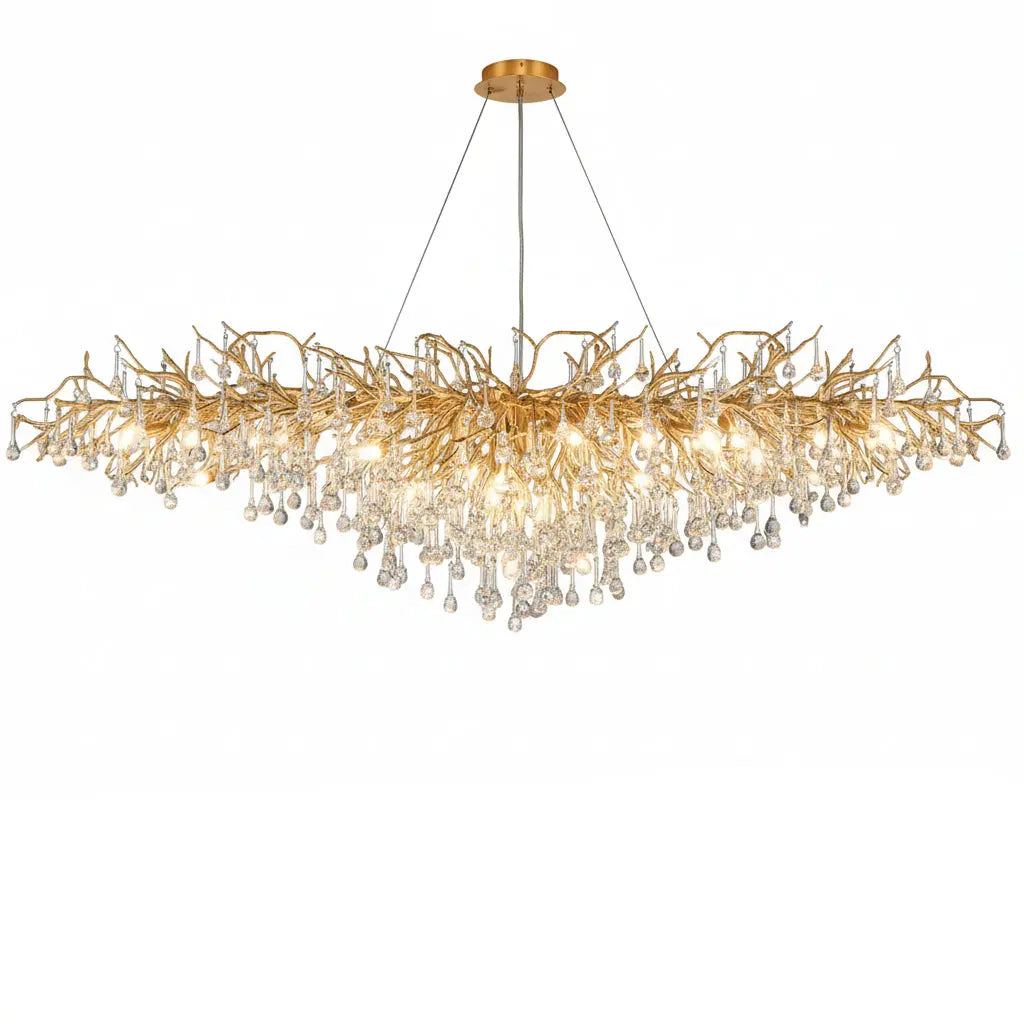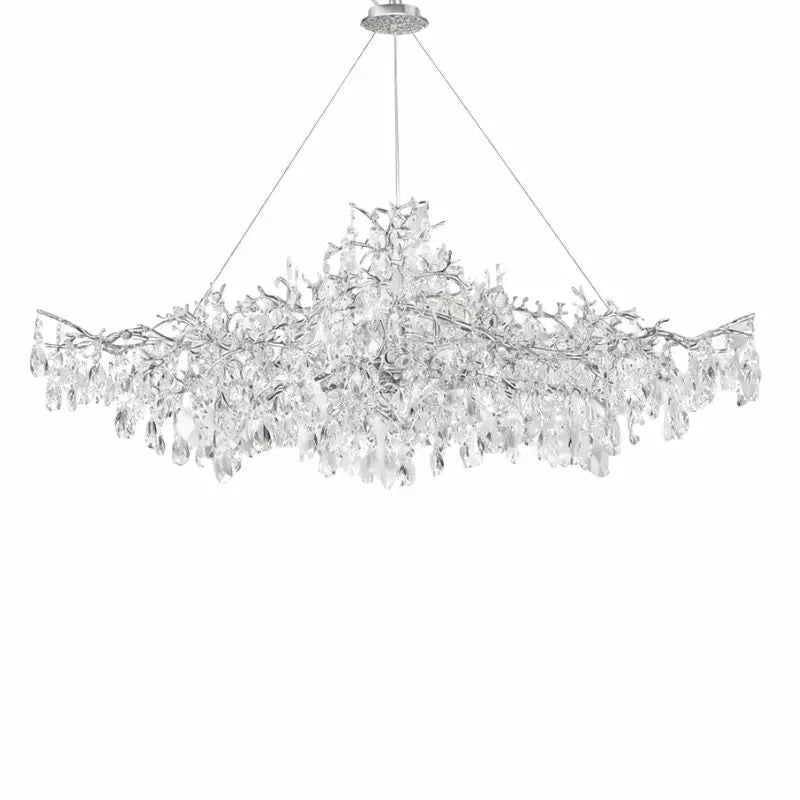Installing a chandelier can bring a touch of elegance to any room. While it might seem complicated, with the right tools and steps, you can do it yourself. This guide will walk you through the process, ensuring a safe and successful installation.
Key Takeaways
- Always turn off the power at the circuit breaker before starting any electrical work.
- Identify the wires correctly to avoid damaging your chandelier or causing electrical hazards.
- Use the right tools and materials to ensure a secure and reliable installation.
- Consider hiring a professional electrician if you're not comfortable with electrical work.
- Regularly inspect and maintain your chandelier's wiring to ensure it remains in good working condition.
Understanding Chandelier Wiring Basics
Installing a chandelier can add elegance to any room, but it's important to understand the wiring basics to ensure a safe installation. This section will cover the essentials, including identifying wires, safety precautions, and common mistakes to avoid.
Identifying Wires
Before you start, it's crucial to know which wire is which. Most chandeliers have three main wires: load (black), neutral (white), and ground. The load wire carries the current, the neutral wire completes the circuit, and the ground wire is for safety. If your chandelier wires aren't color-coded, look for ridges or bumps on the insulation to identify them.
Safety Precautions
Safety should always come first. Always turn off the power at the circuit breaker before you begin any electrical work. Use a voltage tester to ensure the power is off. Never work on live wires. Wear rubber-soled shoes and avoid wet areas to reduce the risk of electric shock.
Common Mistakes to Avoid
One common mistake is not matching the wires correctly. Always connect the load wire to the load, neutral to neutral, and ground to ground. Another mistake is not securing the wire connections properly. Use wire caps and electrical tape to keep connections secure. Lastly, don't forget to check the electrical requirements of your chandelier to avoid overloading the circuit.
Taking the time to understand the wiring basics can save you from damaging your new chandelier and ensure a safe installation.
Tools and Materials Needed for Chandelier Wiring
Before you start wiring your chandelier, it's important to gather all the necessary tools and materials. This will make the job easier and safer.
Essential Tools
To wire a chandelier, you'll need a few basic tools:
- 4-in-1 screwdriver: Handy for various screws.
- Needle-nose pliers: Useful for bending and twisting wires.
- Non-contact voltage tester: Ensures the power is off before you start.
- Stepladder: Essential for reaching the ceiling.
- Wire strippers: Makes it easy to remove the insulation from wires.
Recommended Materials
You'll also need some materials:
- Electrical tape or heat shrink tubing: Used to cover wire connections.
- Electrical box: Necessary to house the wiring.
- 10-32 ground screw: Used for grounding.
- Light bulbs and light texture: Might be needed, depending on your chandelier.
Safety Gear
Safety is crucial when working with electricity. Always wear safety glasses to protect your eyes from debris. Gloves can help prevent electric shocks. A voltage tester is essential to ensure no live wires are present before you start working.
Prepping to wire your chandelier by gathering all your tools and supplies will make the job easier and safer. Make sure everything is within reach before you start working close to the ceiling.
Preparing the Ceiling for Chandelier Installation
Turning Off the Power
Before you start, turn off the power to the area where you'll be working. Use a voltage tester to make sure the power is really off. This step is crucial to avoid any electrical accidents.
Removing the Old Fixture
First, take down the old light fixture. Carefully unscrew it and disconnect the wires. Make sure to keep track of any screws or small parts, as you might need them later.
Inspecting and Reinforcing the Electrical Box
Check the electrical box in the ceiling to ensure it can support the weight of your new chandelier. If it's not strong enough, you may need to reinforce it. This is especially important for heavier chandeliers, like those in a stunning collection of crystal chandeliers. If you're unsure, it might be best to call a professional for help.
Preparing the ceiling properly sets you up for a smooth and successful chandelier installation. Make sure everything is secure and safe before moving on to the next steps.
Step-by-Step Guide to Wiring Your Chandelier
Wiring a chandelier might seem tricky, but with the right steps, you can do it yourself. Follow this guide to ensure a safe and successful installation.
Troubleshooting Common Wiring Issues
Identifying Problems
When your chandelier isn't working, the first step is to identify the problem. Check if the power supply is off by turning the light switch on and off. Use an electricity tester to ensure there's no power flow in the wires. Once confirmed, inspect the wires in the electrical box. Familiarize yourself with the ground, hot, and neutral wires, each having a different color.
Fixing Loose Connections
Loose connections are a common issue. To fix them, first, turn off the power at the main circuit panel. Then, expose the bare wire and check for any worn-out wires. If you find any, replace them by locating the connection junctions, cutting off the old wires, and attaching new ones. Make sure all connections are tight and secure.
When to Call a Professional
If you've tried troubleshooting and the chandelier still doesn't work, it might be time to call a professional. Electrical work can be dangerous, and it's better to be safe than sorry. A professional can ensure everything is up to code and working correctly.
Safety Tips and Final Checks
Double-Checking Connections
Before you finish, make sure to double-check all connections. This means ensuring that all wires are securely connected and there are no loose ends. Use wire connectors and electrical tape to keep everything in place. This step is crucial to prevent any electrical hazards.
Ensuring Stability
After wiring, it's important to check the stability of your chandelier. Make sure it is firmly attached to the ceiling and that the mounting strap can support its weight. Give it a gentle push to see if it wobbles. If it does, tighten the screws and bolts.
Final Safety Measures
- Turn the power back on at the circuit breaker.
- Use a voltage tester to ensure everything is working correctly.
- Inspect the chandelier for any exposed wires or loose parts.
- Make sure the chandelier hangs level and looks straight.
Remember, a well-installed chandelier not only enhances your home’s beauty but also ensures safety and functionality.
By following these steps, you can enjoy your new chandelier with peace of mind, knowing that it is both safe and secure. If you encounter any issues, don't hesitate to consult a professional. Your attention to detail and safety measures will ensure a stunning and safe installation.
Before you finish your chandelier installation, make sure to double-check all connections and secure any loose parts. Safety is key! For more detailed tips and a wide range of beautiful chandeliers, visit our website. Your perfect lighting solution is just a click away!
Conclusion
Installing a chandelier can seem like a big job, but with the right steps, you can do it safely and successfully. Always remember to turn off the power before you start and double-check your work as you go. If you run into any problems or feel unsure, it's best to call a professional. With patience and care, your new chandelier will light up your room beautifully. Happy installing!
Frequently Asked Questions
What should I do if my chandelier doesn't turn on after installation?
First, double-check that the power is on at the circuit breaker. If it is, turn off the power and inspect the wire connections. Make sure all wires are securely connected and try again. If it still doesn't work, consider calling a professional.
How can I tell which wire is which when wiring a chandelier?
Typically, the wires are color-coded: black for hot, white for neutral, and green or bare for ground. If the wires are not color-coded, look for identifying marks like ridges or bumps on the insulation.
Do I need any special tools to install a chandelier?
You'll need basic tools like a screwdriver, needle-nose pliers, wire strippers, and a voltage tester. A stepladder is also essential for reaching the ceiling.
Is it safe to install a chandelier by myself?
Yes, if you follow safety precautions like turning off the power at the circuit breaker and using a voltage tester to ensure no live wires. However, if you're unsure about any step, it's best to call a professional.
What should I do if my chandelier wobbles after installation?
Make sure the chandelier is securely attached to the mounting bracket and that all screws are tightened. If it still wobbles, you may need to reinforce the electrical box or consult a professional.
Can I install a chandelier in any room?
Yes, but make sure the electrical box can support the weight of the chandelier. Also, consider the room's height to ensure there's enough clearance space for the chandelier.









































